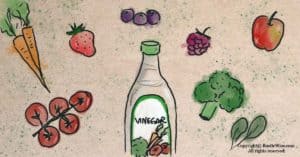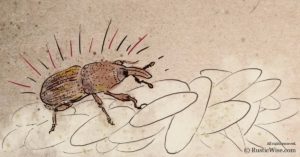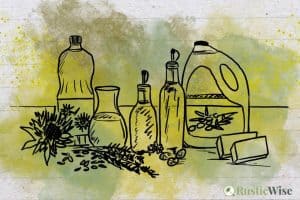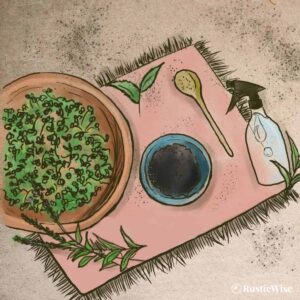Eating Purslane: Health Benefits and How To Prepare This Tasty Plant
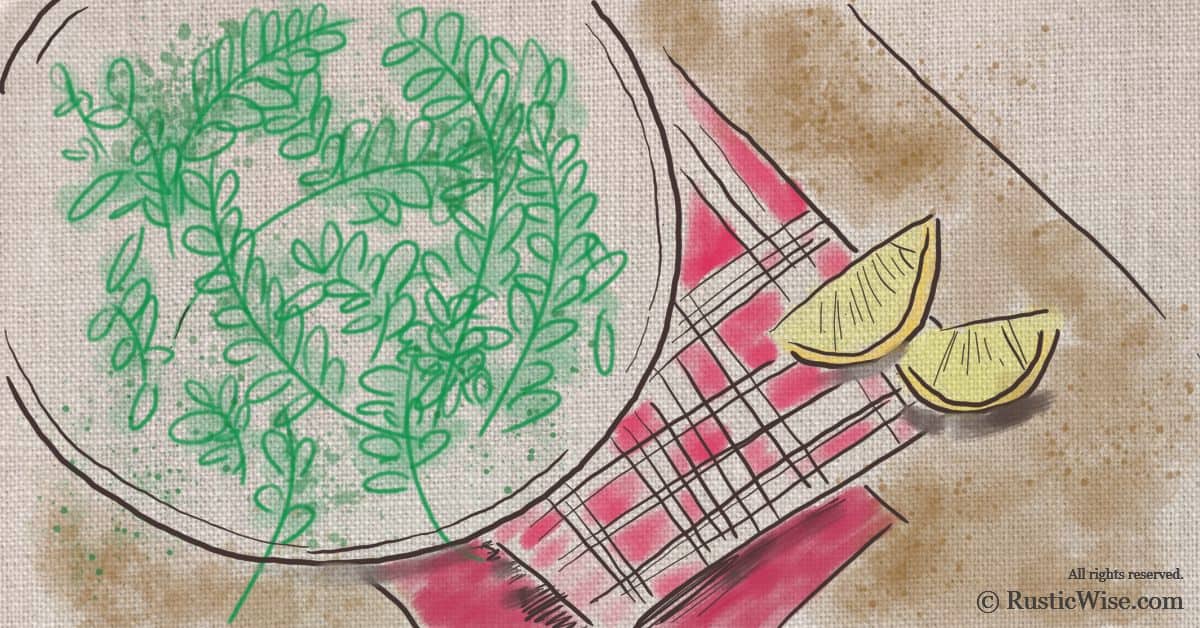
RusticWise is supported by its readers. When you purchase through links on our site, we may earn an affiliate commission. As an Amazon Associate, we earn from qualifying purchases. Thank You!
Purslane is a bit of a rock star amongst the world of edible wild plants.
If you’ve been weeding it instead of eating it, you’re missing out! As an edible garden “weed” purslane is one of the tastiest and most nutritious ones around. Eating purslane is a great way to add more greens to your diet. Packed with vitamins, antioxidants and omega-3s, purslane is a rich source of nutrients.
A member of the Portulacaceae family, the most common type of purslane is Portulaca oleracea. There are more than 50 types of purslane growing all around the world.
While Portulaca oleracea is found growing all over the world, it grows particularly well in colder and temperate climates. It has fleshy succulent leaves and is a ground-hugging plant with delicate yellow flowers with five petals. Purslane has red stems. As a succulent plant, purslane is able to withstand drought and thrives in sunshine and sandy soil.
Sometimes, purslane is also called pigweed, hogweed, verdologa, pusley, or garden/common purslane.
You’ll find purslane growing in sidewalk cracks, in your flower beds and around your yard.
Let’s take a closer look at this annual succulent.
Eating purslane: what does purslane taste like?
If you’ve ever tasted aloe vera, purslane tastes like a tangier version of it. If you’ve never tasted aloe vera, purslane is often compared to watercress. Personally, I think it tastes like a tangy cucumber with some kick! Slightly tangy, slightly crunchy— ideal for snacking on!
Like aloe vera, purslane’s smooth leaves are filled with juice, so when biting into raw purslane, you’ll be pleasantly surprised by its water content.
When cooked, purslane becomes gelatinous making it a good thickener for soups and stews. Use purslane like you would use spinach or a similar type of leafy green—it’s versatile and hardy enough for a variety of uses in the kitchen.
While most people stick with the stems and leaves, purslane’s black seeds are also edible.
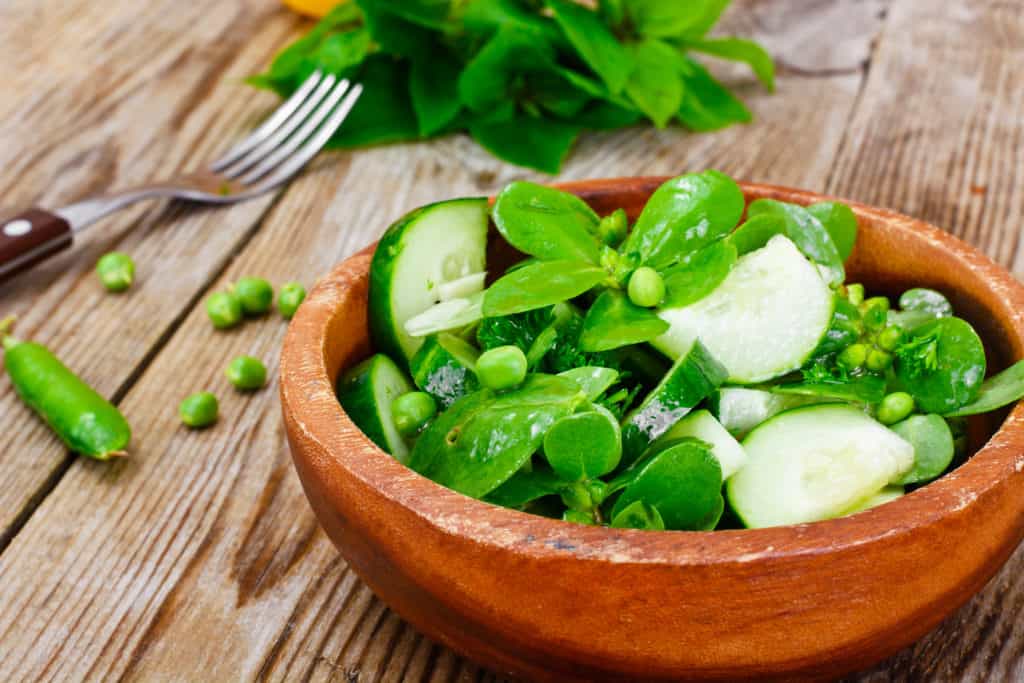
Credit: DepositPhotos / ArtCookStudio
Health benefits of purslane
While spinach and kale are often hailed as superfoods, purslane is deserving of that title as well. Here’s a quick look at the nutritional profile of purslane:
- Jam-packed with vitamins and antioxidants. Purslane contains vitamins A, C and E. It also contains trace amounts of vitamins B1, B2, B3, copper, folate, and phosphorus. You’ll also find iron and calcium in purslane. Purslane contains seven times more beta-carotene than carrots.
- Rich source of omega-3s. Purslane is a unique plant that has two kinds of healthy fatty acids: ALA (normally found in plants) and EPA (normally found in animals such as salmon). It contains high amounts of ALA— five to seven times more than spinach!
- Good for insomnia. Purslane contains melatonin which helps to regulate sleep cycles.
At only 16 calories per 100 grams (3.5 oz) eating purslane is a low-calorie food with plenty of nutrients that would be a healthy addition to your daily diet.
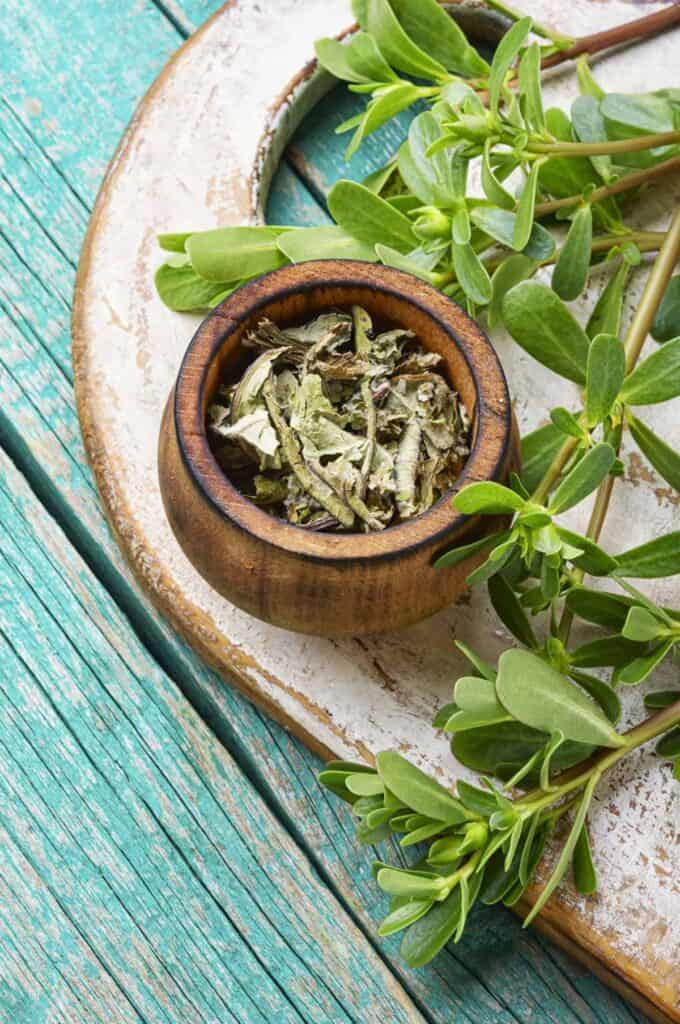
Where can I find purslane?
If you would rather purchase purslane, check out your local farmers market where you can try to find a vendor. Some food-to-farm restaurants featuring locally-foraged food might have purslane incorporated in some dishes. You can also buy purslane seeds online from vendors such as True Leaf Market.
If you’re planning on planting your own purslane check your local greenhouse for seed packets. Make sure to look for the scientific name Portulaca oleracea if you’re planning on eating it as there are many ornamental types of purslane as well. You can also buy seeds online.
Planning on going foraging? You might have purslane growing right in your backyard! As with harvesting any wild plant, please be careful about areas that have been sprayed with herbicides or pesticides.
If you’re harvesting purslane outdoors and are not 100 percent sure you’ve identified it correctly, please speak to a local specialist before eating it.
Some people confuse purslane with a poisonous plant called hairy-stemmed spurge (Euphorbia vermiculata). Like purslane, spurge also has red stems and similar-looking leaves. Where they differ is the spurge features fine hairs along its stems and has a milky liquid inside, whereas purslane doesn’t.
Tips for harvesting purslane
It’s best to harvest purslane while it’s young (before flowers appear) for more tender leaves and fresher taste.
Here’s an interesting fact: purslane leaves taste differently depending on the time of day.
The presence of malic acid in purslane leaves affects the glucose levels thereby affecting the taste of the leaves depending on the time of day. In the morning, malic acid is greater making the leaves sour-tasting. Prefer a zestier taste? Harvest your leaves in the morning. If you’re looking for a milder taste, harvest leaves in the late afternoon.3
Preparing purslane
Got some fresh leaves and stems? Fill your sink with cold water and gently swirl the purslane in the water to loosen dirt and debris. Seeds will come loose and sink to the bottom.
Remove from water and gently pat to dry using clean towels. Keep purslane fresh for a few days in the fridge by loosely wrapping it in a towel and place it in a container with air holes.
There are so many ways to enjoy this mild-tasting edible weed:
- Eat it raw. Fresh leaves from a youngpurslane plant are the best! Add it to salads, eat it alone as a snack, use it as a garnish. When making salads, oil-based, vinegar-y dressings best complement purslane.
- Juice it. Throw in purslane leaves (and stems) and an apple as a natural sweetener. As purslane thickens as its blended, add water as needed. Purslane juice is a great way to start the day.
- Cook it. When cooked, purslane adds a mild tangy, flavor making it the perfect addition to soups and stews.
- Freeze it. While freezing purslane compromises its crunchy texture, you can still use it in soups, stews, or juices.
- Ferment it. If you enjoy sauerkraut, you might enjoy the fermented taste of purslane. Besides, purslane is loaded with more nutrients than your average sauerkraut.
Purslane Recipes
The following recipes are adapted from the book, The Wild Wisdom of Weeds: 13 Essential Plants for Human Survival by Katrina Blair. (If you’re interested in learning more about wild edible food, this book doesn’t disappoint!)
Pickled Purslane
- 3-4 cups purslane
- 3 cups apple cider vinegar
- 3 cloves garlic
- 1 tbsp peppercorns
- 1 tbsp honey
- 1 tbsp salt
- 1 cup water
It’s time to make use of those glass mason jars you have around the house!
Chop purslane lightly. You don’t need to dice it finely—larger chunks are fine. Place purslane in a quart jar and add all other ingredients. Stir gently until well combined. Add enough water to cover all ingredients. Secure on the lid. Store at room temperature for one week and then move to the refrigerator for long term storage. Use the pickled purslane as a side garnish to add a sour pickle-like flavor!
No-Bake Purslane Peach Pie
CRUST:
- ½ cup coconut flakes
- ½ cup almonds
- ½ cup buckwheat groats
- 1 tbsp coconut oil
- 2 cups dates
- Pinch of salt
FILLING:
- 2 cups purslane
- 2 cups peaches
- 1 lemon, juiced
- 2 tbsp honey
Start by making the crust. Add all crust ingredients into food processor and grind together. After a few minutes, you’ll get a doughy consistency. Press the dough into a standard 9 inch pie pan. Blend the filling ingredients and pour into pie crust. Chill for one hour. Garnish with sliced peaches and a sprinkle of purslane leaves.
Purslane Lemon Elixir
- 1 cup purslane
- 1 lemon, juiced
- 2 tbsp honey
- 5 cups water
Blend all ingredients and only if desired strain out the pulp. Otherwise enjoy this soothing internal elixir for optimum health benefits!
👉If you like this post, see our Timeless Guide To Foraging for Wild Food.
Would you like more timeless tips via email?
Fun tips to help you live an independent, self-sustaining lifestyle. Opt-out at any time.

References
- Healthline, Purslane – A Tasty “Weed” That is Loaded With Nutrients: https://www.healthline.com/nutrition/purslane#section2. Accessed March 2020.
- Ontario Ministry of Agriculture, Food and Rural Affairs, Ontario Weeds: Hairy-stemmed spurge: http://www.omafra.gov.on.ca/english/crops/facts/ontweeds/hairy_spurge.htm. Accessed March 2020.
- Blair, Katrina (2014). The Wild Wisdom of Weeds: 13 Essential Plants for Human Survival. Chelsea Green Publishing. ISBN 978-1-60358-516-3.

Author: Theresa Tesolin
Theresa is co-founder of RusticWise. She helps people unleash their inner DIY spirit by encouraging them to get dirty and make or grow something from scratch.


